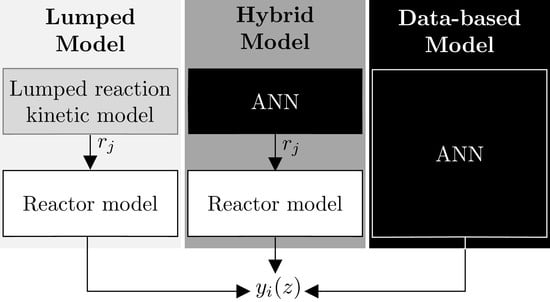Kinetics of the Direct DME Synthesis: State of the Art and Comprehensive Comparison of Semi-Mechanistic, Data-Based and Hybrid Modeling Approaches
Abstract
Share and Cite
Delgado Otalvaro, N.; Bilir, P.G.; Herrera Delgado, K.; Pitter, S.; Sauer, J. Kinetics of the Direct DME Synthesis: State of the Art and Comprehensive Comparison of Semi-Mechanistic, Data-Based and Hybrid Modeling Approaches. Catalysts 2022, 12, 347. https://doi.org/10.3390/catal12030347
Delgado Otalvaro N, Bilir PG, Herrera Delgado K, Pitter S, Sauer J. Kinetics of the Direct DME Synthesis: State of the Art and Comprehensive Comparison of Semi-Mechanistic, Data-Based and Hybrid Modeling Approaches. Catalysts. 2022; 12(3):347. https://doi.org/10.3390/catal12030347
Chicago/Turabian StyleDelgado Otalvaro, Nirvana, Pembe Gül Bilir, Karla Herrera Delgado, Stephan Pitter, and Jörg Sauer. 2022. "Kinetics of the Direct DME Synthesis: State of the Art and Comprehensive Comparison of Semi-Mechanistic, Data-Based and Hybrid Modeling Approaches" Catalysts 12, no. 3: 347. https://doi.org/10.3390/catal12030347
APA StyleDelgado Otalvaro, N., Bilir, P. G., Herrera Delgado, K., Pitter, S., & Sauer, J. (2022). Kinetics of the Direct DME Synthesis: State of the Art and Comprehensive Comparison of Semi-Mechanistic, Data-Based and Hybrid Modeling Approaches. Catalysts, 12(3), 347. https://doi.org/10.3390/catal12030347






